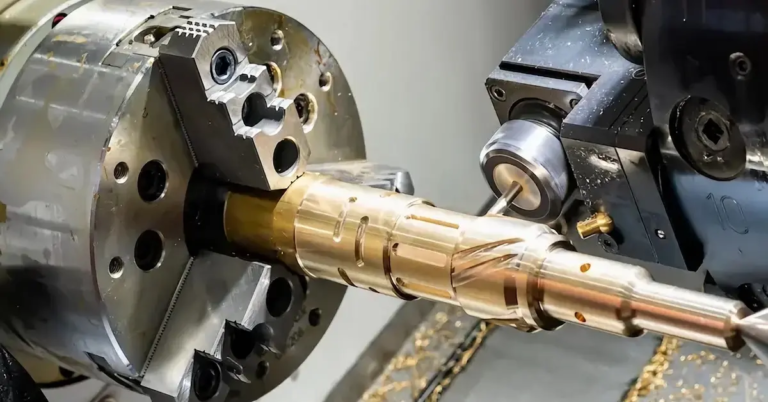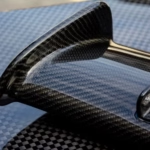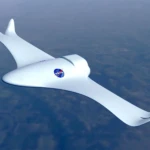Achieve perfect fit and functionality: A basic guide to your CNC partial inspection criteria (from five-axis experts)
Accuracy is more than just a buzzword in CNC machining; it is the absolute basis for the functionality, performance and reliability of components we create. Whether it’s a critical aerospace bay, a sophisticated medical implant, or a large volume of automotive parts, the difference between success and expensive failures will often depend on rigorous inspections. For engineers, buyers and designers to source CNC components, it is not only useful to understand the part inspection standards – this is essential to ensure you get parts that meet the exact specifications and perform perfectly in their intended applications.
In Greatlight CNC machining, we use state-of-the-art five-axis technology to make complex, high-precision metal parts every day, and quality control is not the final checkpoint. This is our inner part All Manufacturing process. This guide digs into the basic world of CNC partial inspection standards, explaining core principles, common methods, and key considerations to enhance your capabilities when specifying and validating the next precision component.
Why inspection criteria are important: beyond basic measurements
Simply measuring parts is not enough. Inspection criteria provide a key framework for definition:
- What to measure: It is necessary to verify exactly which dimensions, geometry and surface features.
- How to measure: The prescribed methods, tools and environmental conditions required for reliable results.
- Acceptable limitations: Definition Tolerance – A deviation that allows deviation from nominal dimensions or geometry.
- Data Explanation: How to consistently evaluate the measured data for these tolerances.
Without consensus standards, measurements will become subjective and unreliable. Standards ensure:
- consistency: Check parts the same way every time regardless of the operator, location or time.
- Interoperability: Parts from different suppliers can be reliably fit and run.
- quality assurance: Objective evidence that the parts meet the design intention.
- Reduce risks: Greatly reduces the chances of unqualified parts reaching assembly or end users.
- Clear communication: A common language is provided between designers, manufacturers and inspectors.
The core pillar of the CNC partial inspection standard
Tolerance Standard: Accurate Language
- ISO 286 (Limited and Fitted ISO System): Define international benchmarks for standard tolerance levels (e.g., IT6, IT7) and specify axis and hole fittings (e.g., H7/G6). It provides numerical limitations for linear dimensions.
- ASME Y14.5 – Geometric Dimensions and Tolerances (GD&T): This can be said to be The most critical Standard for complex CNC parts. GD&T not only defines the size, but also defines the Form, direction, position and jump Use the functionality of symbolic languages that are directly applied to drawings. Basic concepts include:
- date: Accurate reference points, lines or surfaces to create coordinate systems for measurement.
- Function control frame: Contains GD&T symbols, tolerance values, modifiers, and benchmarks for specified control requirements.
- Tolerance area: The defined area (cylindrical, plane, etc.) must be located on the surface in that area.
- Why GD&T is crucial: It provides clear instructions, generally allowing for more manufacturing and inspectable functional tolerances with only traditional Plus/minus tolerances.
Dimensional measurement criteria: Defining measurement rules
- ASME B89 (Dimensional Metric Standard): A comprehensive suite of standards that determines the methodology, best practices and calibration requirements for dimensional measurement. Key elements covered include:
- Equipment calibration (draws back to NIST or equivalent national standards).
- Definition of terms such as precision, precision, solution and uncertainty.
- Detection strategy and stylus selection.
- Environmental control (temperature is most important – usually 20°C/68°F).
- ASME B89.7.2-Dimensional Measurement Plan: Key steps to guide the plan how Complex parts will be measured efficiently and efficiently.
- ASME B89 (Dimensional Metric Standard): A comprehensive suite of standards that determines the methodology, best practices and calibration requirements for dimensional measurement. Key elements covered include:
- Specific measurement method standards (example):
- ISO 4287 / ASME B46.1: Define measurement parameters and methods Surface texture (RA, RZ, etc.).
- ISO 10360 Series: Specify the acceptance and recovery tests for the coordinate measuring machine (CMM) to verify its accuracy and performance. It is crucial for reliable inspection of complex parts.
- ASME Y14.43: Provides standard practice for size and tolerance Instruments and fixtures Used for inspection.
Common CNC partial inspection methods and their consistency with standards
Manual inspection (manual tools):
- tool: Micron, caliper, altimeter, pin gauge, surface roughness tester, optical comparator.
- application: Ideal for quick inspection, selecting the size of the first partition inspection (FAI) or verifying simple components. Crucial for form measurements, such as the roundness of the instrument with a telescope.
- Standard dependencies: The accuracy of the standard measurement techniques outlined in ASME B89 is required; surface roughness measurements are subject to ISO 4287/ASME B46.1.
Coordinated measuring machine (CMM):
- Gold Standard: Automate the precise measurement of complex geometric shapes, especially those defined by GD&T. Highly accurate triggers or scan probes to collect dense point clouds.
- The function of the standard: The core inspection software directly explains each ASME Y14.5.1 (mathematical definition of mathematical definition and tolerant principle) directly explains the GD&T annotation. The measurement plan must consider ASME B89.7.2 and comply with ISO 10360 machine performance qualifications. This powerful synergy allows for rigorous verification of complex benchmark and tolerance areas.
Optical Comparator:
- tool: Project the enlarged profile shadow onto the screen.
- application: Compare amplified cover (template) representing the maximum and minimum material limitations (go/no-go measurement principle). Great for quick checking of relatively simple 2D configuration files.
- Standard dependencies: Calibration optics and specific overlay templates designed according to relevant dimension standards are required.
Contactless scanning (laser, white):
- tool: Laser scanner, structural lamp 3D scanner.
- application: Capture high-density point clouds for detailed 3D model comparisons (CAD-CART or CAD-TO-SCAN), reverse engineering, complex freestyle surface verification. Speed is a major advantage.
- Standard dependencies: The accuracy of the scanner requires qualifications; the VDI 2630 has become a key standard for testing optical 3D measurement systems. Interpretation of GD&T from 3D scanned data requires specialized software and understanding of standards.
- Special instrument (function/attribute meter):
- Purpose: Quickly evaluate whether the function is "tolerant" or "Out of tolerance" No specific numerical measurements are provided. Think of the hole/plugless meter.
- application: Speed is crucial to high-quality production. A fixed gauge can be relative to a reference and can check multiple functions simultaneously.
- Standard dependencies: The instruments must be designed according to ASME Y14.43 to ensure that they accurately represent the virtual condition boundaries defined by GD&T.
Establishing an effective inspection protocol: collaborative effort
A successful inspection is not just the manufacturer’s responsibility; it requires clear communication from customers:
- Definition requirements for defining drawings: GD&T with ASME Y14.5 Effectively. Obviously, select the benchmark based on the function and specify the geometric controls. Indicates the key (key features) and training size.
- Specify applicable criteria: Explain the relevant criteria in the graphic title block or comment (e.g. "MM to ISO 2768-1, medium; GDT Per asme Y14.5-2018").
- Prioritize key features: What tolerances are functionally important to convey. This guides checking resource allocation.
- Define the check level: Depending on the risk, specifying an AQL (Acceptable Quality Level) sampling plan (e.g., ISO 2859-1) for production runs or requiring 100% inspection of critical parts.
- Agree to report: Specify the required reports (Fair – First Article Inspection Report, Dimension Report, Material Certificate, CMM Report, Surface Finish). Clearly define the report format and include data points.
Precisely verified five-axis five-axis advantages:
Our investment in advanced five-axis CNC machining inherently enhances our ability to perform accurate and effective inspections:
- Complex functional access: A five-axis machine equipped with detection capabilities can check complex geometry in a single setup, minimizing processing errors and reference changes on a 3-axis CMMS when fixing complex parts.
- Integrated machine detection: Process checks are allowed. Can verify key functions period Processing to realize real-time adjustment of tools or offsets. This greatly reduces the scrap rate and increases the first frequent output, especially for complex high-value parts. Verification is directly consistent with the ASME Y14.5 definition.
- Production control prototype: In a single system, a five-axis machine facilitates machining and verification.
- High surface finishes achieve: Advanced five-axis tool path optimization inherently produces superior surface finishes that are easier to meet the strict requirements of ISO 4287/ASME B46.1.
Conclusion: Accuracy based on recognized standards
Navigation CNC Parts Inspection Standards ensure that the components driving your product meet the highest benchmarks for fit, functionality and reliability. Go beyond measurements by understanding the frameworks provided by ISO, ASME and other standard bodies, as well as precise accuracy through integrated metrology, such as Greatlight – we provide proven performance.
Don’t make the quality of critical components clear. When demanding applications require unrivaled accuracy in complex metal parts, coupled with one-stop post-processing and commitment to strict inspection compliance, choose a partner based on advanced functionality and basic quality principles.
Working with Greatlight CNC machining – Five-axis accuracy meets uncompromising inspection rigorously.
FAQ: CNC parts inspection standards mystery
Question 1: What is the most important criterion I need to understand when ordering accurate CNC parts?
Although multiple standards are involved, ASME Y14.5 (geometric dimensions and tolerances) It is crucial to clearly and clearly define functional requirements, especially sizes beyond simple sizes. Understanding its core principles (benchmarks, controls, modifiers) is crucial for designers and those who review review reports. Dimensional fit that complements ISO 286.
Q2: How to specifically improve inspections for five-axis CNC machining?
The key advantage is precise access. On-board detection allows checking awkward settings on traditional CMMs, allowing for checking for complex functions on site On the computer, use Same Workpiece coordinate system is used for processing. This greatly reduces potential errors in the reconstruction and ensures alignment with the GD&T reference specified on the drawing. Process checking can prevent expensive machining errors from progressing too far.
Q3: Are the parts manually inspected not as accurate as those measured by CMM?
Accuracy depends on the tool and the standard procedures to follow. After the ASME B89 measurement practice, high-quality, calibrated hand tools operated by skilled technicians may be very accurate for a specific inspection. However, CMM provides excellent automation for speeds of complex geometries, direct GD&T calculations, eliminate human variability and provide recorded digital reports for complex functions. Manual checking has many GD&T requirements for struggles.
Question 4: I saw the ISO and ASME standards. Which one should I use?
This depends heavily on your industry and location:
- ASME Y14.5: The whole of North America is the main one. Highly detailed and widely considered.
- ISO GPS (Geometry Product Specifications): International Standard Series (covering areas similar to ASME Y14.5, ISO 286, etc.). Usually preferred in Europe and elsewhere. More and more coordinated efforts exist. It is crucial that The specific criteria used must be clearly referenced in your drawings Avoid ambiguity about manufacturers and inspectors.
Question 5: Why does inspection increase costs? What is ROI?
Check for equipment that requires calibration (usually noble like CMM), skilled personnel, time and meticulous planning. However, the return on investment is high:
- Prevent catastrophic failures: Capture unqualified parts before assembly or transportation.
- Reduce waste and rework: Identify errors to reduce waste of material and processing time early.
- Ensure functionality: Ensure that the parts work according to the design.
- Build trust: Provide quality proof to customers.
- Improved process: Inspection data highlights the potential inefficiency of processing processes.
Question 6: What level of inspection details should be expected in the report?
It depends on the protocol and partial complexity. one The first article inspection report (fair) Detailed measurements of each dimension, material certification, surface treatment and process annotation are usually included. Production run reports may follow a sampling plan (such as AQL). Always pre-specify reporting requirements – Require detailed data for key dimensions/GD&T annotations. Desirable traceable instrument ID.
Q7: How is the surface finish inspection suitable?
Surface finishes (RA, RZ, etc.) significantly affect part function (friction, wear, fatigue, seal). Standards such as ISO 4287 and ASME B46.1 define parameters and measurement methods. It is usually measured with a reference meter. Completion requirements must be specified on the drawing, including RA values and sample length. Surface shooting is also crucial to appearance and corrosion resistance.

















